IUCN links PROVE that a sustainability study in Taiji and Iwate is well overdue. The Government of Japan are indeed using 20 year old data or deliberately ignoring the facts listed here by the IUCN
Risso's IUCN link
83,300 (CV=17%) in three areas of concentrated occurrence off Japan (Miyashita 1993) This shows the quotas are being set from a 21 year old set of figures.
Conservation Actions: The species is listed in Appendix II of CITES. The North and Baltic Sea subpopulations are included in Appendix II of CMS.
This is a circumglobal species, which migrates between summering and wintering grounds. Off California, where these movements are best known, they may cross between US and Mexican waters. Data on abundance, bycatch, and behaviour needed in order to develop conservation measures that will enable protection of the natural habitat of the species
Japan is the only country on the planet to actively hunt Risso's dolphins!
Bottlenose: IUCN link
36,791 (CV=25%) in Japanese coastal waters (Miyashita 1993)
Acute conservation problems are known or suspected in at least: (a) the Mediterranean and Black seas (IWC 1992, Reeves and Notarbartolo di Sciara 2006); (b) Sri Lanka (Leatherwood and Reeves 1989); (c) Peru, Ecuador and Chile (Read et al. 1988; Van Waerebeek et al. 1990, 1997; Sanino et al. 2004; K. Van Waerebeek pers. comm.); (d) Taiwan (Hammond and Leatherwood 1984, Perrin 1989, Wang et al. 1999); and (e) Japan (Miyazaki 1983
Conservation Actions: The species is listed in Appendix II of CITES.
The Bottlenose Dolphin has been afforded special protected status under Annex II of the European Union’s Habitats Directive. Commercial hunting of Black Sea cetaceans including Bottlenose Dolphins was banned in 1966 in the former USSR, Bulgaria and Romania, and in 1983 in Turkey.
WHY HAS THIS NOT BEEN AFFORDED IN JAPAN?
AGAIN ANOTHER 20 YEAR OLD STUDY USED TO TAKE FIGURES FOR THE QUOTAS FROM!
Pantropical spotted: IUCN link
The north-eastern offshore Spotted Dolphin (the form most affected by the ETP tuna fishery) numbered about 737,000 in 2003 (CV=15%; Gerrodette et al. 2005), a reduction of 76% from original size in 1959 (Reilly et al. 2005). This population is not showing clear signs of recovery despite the dramatic decline in mortality in recent years (Gerrodette and Forcada 2005)
Estimate about 438,000 inhabited Japanese waters in the early 1990s (Miyashita 1993).
Japan takes large numbers of spotted dolphins for human consumption. The catch in 1982 was 3,799, and annual catches between 1994 and 1997 ranged from 23 to 449 (Perrin 2002). Between 1995 and 2004, the average annual catch was 129 animals (Kasuya 2007). The drive fishery for Spotted Dolphins began in 1959 and is thought to have caused a slight decline in the minimum age at attainment of sexual maturity in females (Kasuya 1985).
Conservation Actions: The species is listed in Appendix II of CITES.
Spotted Dolphins, as with other species impacted by the ETP tuna purse-seine fishery, are managed both nationally by the coastal countries and internationally by the IATTC. The IATTC has imposed annual stock mortality limits on each purse seine and promulgated regulations regarding the safe release of dolphins (Bayliff 2001).
As the species comprises several subspecies and regional populations, the conservation status of each of these should be assessed separately since the available estimates of abundance and removals suggest that some of them may fall into a Threatened category.
WHY HAS THE SPECIES NOT BEEN ASSESSED BY SEPARATE SUB SPECIES TO SEE IF THEY FALL INTO THE THREATENED CATEGORY?
Striped:IUCN link
Relatively few striped dolphins (about 19,631; CV = 70%) were present in the nearshore waters off Japan (Kasuya 1999). In the coastal portion of this range, the population has probably been depleted by directed takes (Kasuya 1999); however, questions of population identity remain (IWC 1994).
The largest directed catches have occurred in Japanese waters, in drive and hand-harpoon fisheries at several locations that date back to at least the Meiji period (1868-1912). Catch statistics are incomplete before 1978, but annual recorded takes exceeded 15,000-20,000 striped dolphins in some years. Catches were reduced beginning in 1981 and have since varied between 358 (in 1987) and 4,783 (1981), averaging 2,512 during the period 1981-89. Between 1988-1994, the average catch was 1,045 (Kasuya 1999). The average take between 1995-2004 was 502 individuals (Kasuya 2007), and there has been an annual quota of 725 since 1993 (through 2006). Fragmented information on morphology, life history, pollutant levels and genetics suggests that the striped dolphins taken by Japanese fisheries are from more than one subpopulation, with varying proportions among fisheries and perhaps over time (IWC 1993).
Conservation Actions: The species is listed in Appendix II of CITES.
Striped dolphins are one of the main small cetacean species involved in small cetacean harpoon and drive fisheries in Japanese waters. The impact of these takes on the populations should be reassessed.
The current ban on driftnet fishing in the Mediterranean should be implemented and enforced as a matter of priority.
THE IUCN HAS SAID THE IMPACT OF THE DRIVE FISHERIES ON THESE DOLPHINS SHOULD BE REASSESSED SO WHY HAVEN'T THEY BEEN?
Pacific white sided: IUCN Link
Two separate estimates of abundance have been made for waters of the central North Pacific, suggesting that 900,000–1,000,000 Pacific White-sided Dolphins may inhabit this oceanic region (Buckland et al. 1993, Miyashita 1993); however, precision was low for both studies, and vessel attraction probably resulted in a substantial overestimation of population size (Buckland et al. 1993).
The potential for renewed directed takes in Japanese waters, coupled with evidence for population substructure, particularly at the southern ends of this species' range, may require the re-examination of the threat to this species.
Conservation Actions: The species is listed in Appendix II of CITES.
The most significant international conservation measure for this species was the United Nations (U.N.) moratorium on high-seas driftnet fishing implemented in 1993. In the eastern North Pacific, the U.S drift gillnet fishery has been required since 1996 to use acoustic warning devices (pingers) to reduce cetacean bycatch; however, low levels of bycatch of Lagenorhynchus obliquidens have continued (Carretta et al. 2005).
AS JAPAN DID RESTART DIRECT TAKES, WHY HAS THE THREAT TO THE SPECIES NOT BEEN RE EXAMINED?
For some reason Yamamoto missed off the false killer whales and the short finned pilot whales, but their data is there too.
False Killer Whale IUCN link
Not been caught for the last 3 seasons in Taiji, despite the quota being given every year.
Global trend or abundance data for this species are unavailable.
Studies on population structure in this species indicate both broad-scale (between-ocean) limits on gene flow (e.g., Kitchener et al. 1990), and limited gene flow on smaller (within-ocean) scales (Chivers et al. 2007). Abundance has been estimated for the coastal waters of China and Japan (16,000, CV=26%; Miyashita 1993).
Although there is considerable controversy regarding the absolute level of declines, there is good evidence of large-scale reductions in many predatory fish populations (e.g., Baum et al. 2003, 2005; Sibert et al. 2006; Polacheck 2006) and over-fishing and collapse of several important “prey” fish stocks world-wide (e.g., Jackson et al. 2001). The effects of such fish population reductions and subsequent ecosystem changes on world-wide populations of false killer whales are unknown but could result in population declines.
Conservation Actions: The species is listed in Appendix II of CITES
This is a relatively poorly-known species which, although mostly observed over deep water, is known to strand from many coasts. Abundance estimates as well as by-catch data do not exist for most areas, nor are there detailed accounts on migratory behaviour. Clearly, more research is needed.
IUCN STATE CLEARLY MORE RESEARCH IS NEEDED SO WHY HASN'T IT BEEN DONE?
Short Finned Pilot Whale IUCN link
There are two geographical forms of Short-finned Pilot Whales off Japan, northern and southern, differing in external and cranial morphology (Rice 1998). Their exact taxonomic status is unresolved, but they may represent separate species or subspecies.
The Short-finned Pilot Whales are treated as one species even though there is evidence that it may be a complex of two or more species. If it is so designated, the classification may change. If taxonomic designations change, then it is suspected that some new species may warrant listing under higher categories of risk. Because additional data should resolve this taxonomic uncertainty, the current species is listed as Data Deficient.
The northern form off Japan has a sub population estimated at 4,000–5,000, and the southern form has an estimated sub population of about 14,000 in coastal waters (Miyashita 1993)
The Short-finned Pilot Whale has been exploited for centuries in the western North Pacific. The largest catches have recently occurred off Japan, where small coastal whaling stations and drive fisheries take a few hundred annually. In recent years, the southern form continues to sustain a higher kill than the northern form and is considered depleted The current annual national quota is 50. In 1982, the drive fishery at Taiji expanded and harpooning of the northern form was resumed off Sanriku and Hokkaido. Between 1982 and 1985, 1,755 whales of the southern form were killed, and 519 of the northern form were taken during this same period. The current annual national quota is 450. From 1985 to 1989, Japan took a total of 2,326 short-finned pilot whales. The drive fisheries in Japan, as well as the Japanese harpoon fishery continue today. In 1997, Japan recorded a catch of 347 Short-finned Pilot Whales (Olson and Reilly 2002).
Conservation Actions: The species is listed on Appendix II of CITES. Research is needed to determine the impact of potential threats on this species.
RESEARCH IS NEEDED AS AGAIN THE TAIJI QUOTAS ARE SET USING 21 YEAR OLD FIGURES SO WHY HASN'T THIS BEEN DONE?
Dalls Porpoise IUCN link
In the western North Pacific, the truei-type population migrating between the Pacific coasts of Japan and the central Okhotsk Sea is estimated at 217,000 (CV=0.23). The dalli-type population migrating between the Sea of Japan and the southern Okhotsk Sea is estimated at 226,000 (CV=0.15), and the dalli-type population summering in the northern Okhotsk Sea at 111,000 (CV=0.29) (IWC 1998). These estimates are subject to biases due to response to survey vessels.
The International Whaling Commission currently recognizes 11 populations of this species, based on differences in genetics, pollutant loads, parasite faunas, and distribution patterns of cow/calf pairs (IWC 2002). Three of them summer in the Okhotsk Sea, two in the Bering Sea, four in the North Pacific, and two off the U.S. coast, but the wintering grounds are unknown for many of them. The populations cannot be reliably distinguished by their external appearance at sea except for the three summering in the Okhotsk Sea, which are distinguishable based on the pigmentation and location.
The Japanese government began to regulate the hand-harpoon hunt in 1989, and a catch quota was introduced in 1993. The fishery currently operates with a quota of 9,000 dalli-type Sea of Japan-southern Okhotsk Sea population and 8,700 truei-type Pacific coast-central Okhotsk Sea population (IWC 2002). The current level of reported takes are about 4% of the mean estimate of the size of the populations; however, these catch statistics might not be reliable (Kasuya 2007).
Environmental contaminants are also thought to be a threat, and high levels of organochlorines may reduce testosterone levels in males and affect calf viability, thereby influencing reproduction and survival (Subramanian et al. 1987, 1988).
Conservation Actions: The species is listed in Appendix II of CITES.
The long period since the last survey (over 15 years) warrants urgent reassessment of the status of the two sub populations hunted by the Japanese hand harpoon fishery.
WHY HASN'T AN URGENT REASSESSMENT BEEN DONE?
As you can see from the IUCN reports above ALL species need assessment for sustainability, as none have any up to date reports to work from, they ARE being done from 21 year old data and some have IUCN Conservation Actions listed that also have not been done.
Shinzo Abe and the Japanese Government need to halt the hunts until they have the information needed above for everyone's benefit.



















.png)
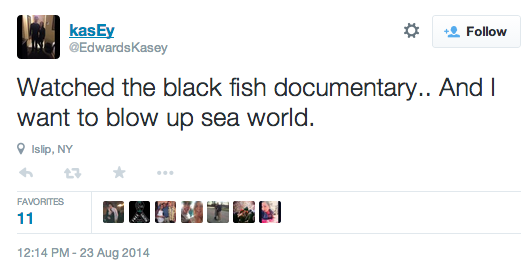
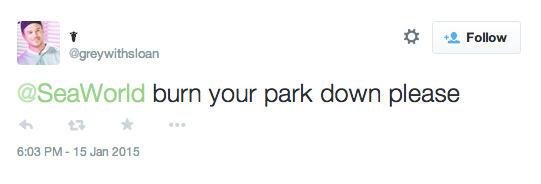
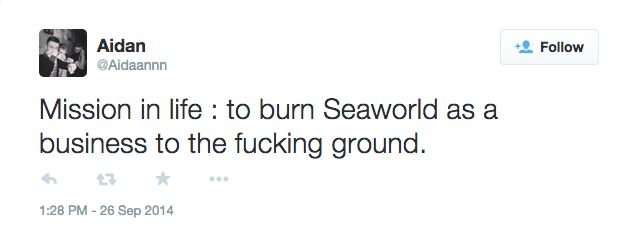
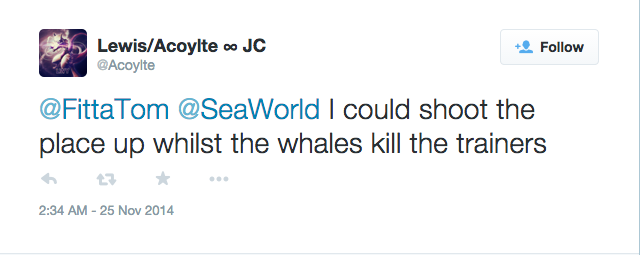
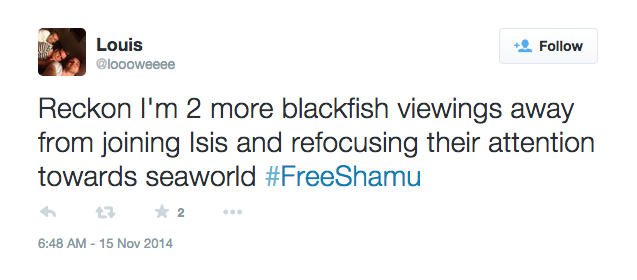



.png)






